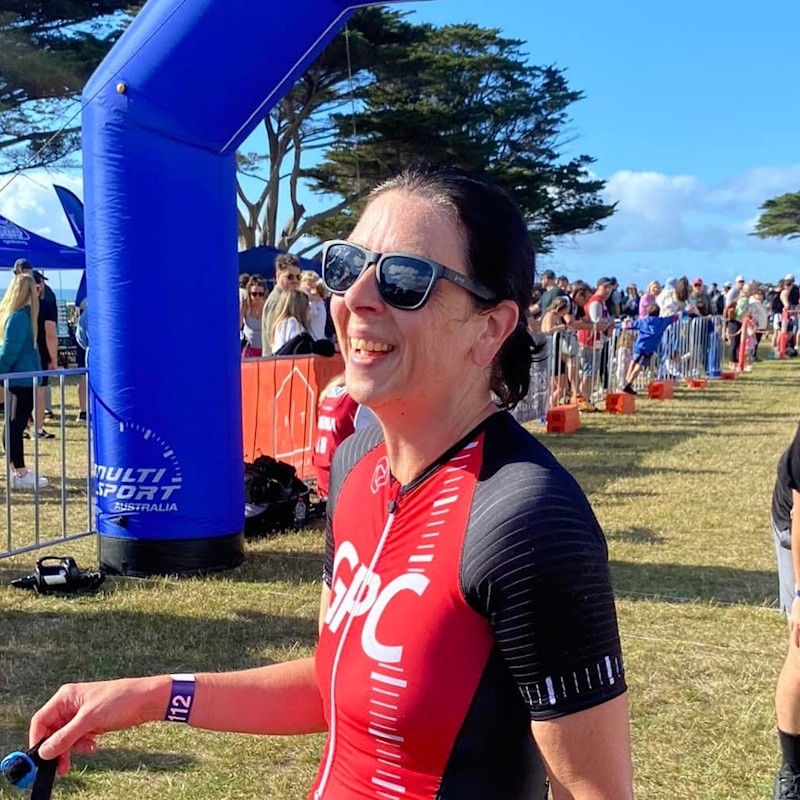
Dawn Fraser
Ballarat Marathon
Dawn's headline numbers
Dawn's strategy
Fueling
Carbohydrate is the main fuel you burn when racing. Failing to fuel properly is a leading cause of underperformance in longer races.
Dawn followed a structured fueling strategy that delivered consistent energy across her first marathon. She took one PF 30 Gel every 30 minutes, including a PF 30 Caffeine Gel at 1 hour 45 minutes, which helped her avoid the dreaded bonk. She felt strong through the last 10km, despite her longest training run being only 25km. Around the 2-hour mark, flavour fatigue kicked in and she struggled to take on her next gel, but after a quick chat with her coach from the sidelines, she stuck to the plan and spread the final three gels every 5km from 25-35km. After dealing with some illness in the build up to the race, Dawn adjusted her goal and adopted a run/walk approach, lowering her intensity and increasing her time on the course, which may have contributed to the gel fatigue she experienced. For future events, adding texture variety, such as including PF 30 Chews or some real food, may help fueling feel more manageable later on in the race.
Hydration
Taking on board an appropriate amount of fluid and sodium is essential to maintaining blood volume and supporting the cardiovascular effort needed to perform on race day.
Whilst the absolute amount of sodium and fluid consumed per hour is important, it’s critical to consider these in relation to each other. This is known as 'relative sodium concentration' and it’s expressed in milligrams per litre (mg/L). How much sodium you’re taking in per litre of fluid is more important than the absolute amount taken in per hour.
Dawn sipped from two 500ml soft flasks of PF Carb & Electrolyte Drink Mix in her hydration vest, allowing her to proactively replace her sweat sodium losses and get extra carbs in from the start. Ballarat offered optimal race temperatures with cool, overcast conditions. As a result, Dawn didn’t drink as much as she’d planned, finishing one flask and only part of the second, whilst picking up a few extra cups of water at the on-course aid stations. In total, she drank just under 800ml across the race. Whilst on the surface her intake is fairly low, it likely replaced a sufficient proportion of her sweat losses, due to the mild conditions and lower relative exercise intensity, and kept her body mass loss under 4% (within the tolerable level of dehydration for performance).
Caffeine
Beyond the Three Levers of Performance (carb, sodium and fluid), caffeine is one of only a few substances that is proven to improve performance for most endurance athletes as it can help stave off mental and physical fatigue.
Dawn incorporated caffeine sensibly into her race day strategy, starting with a coffee at breakfast, then a PF 30 Caffeine Gel 40 minutes before the start, and another at the 1 hour 45 minute mark. This timing would’ve helped her maintain circulating levels of the stimulant to support alertness across the race. Factoring in the pre-race caffeine gel, Dawn’s total intake of the stimulant was at the low end of the recommended range. Given her subjectively high tolerance for caffeine, and evidence suggesting 4-6mg/kg doses are most effective for enhancing performance, she may want to consider adding another dose to her strategy for her next race in Melbourne.
How Dawn hit her numbers
Here's everything that Dawn ate and drank on the day...
Dawn's weapons of choice
Final thoughts
Dawn's full stats
Data Confidence?
There is an adequate level of accuracy in the data collected and the numbers reported. The athlete manages to recall what they ate and drank including most specifics (brands flavours quantities plausible estimations of volumes). However there are estimations made within the data which affect the overall confidence level in the data reported.